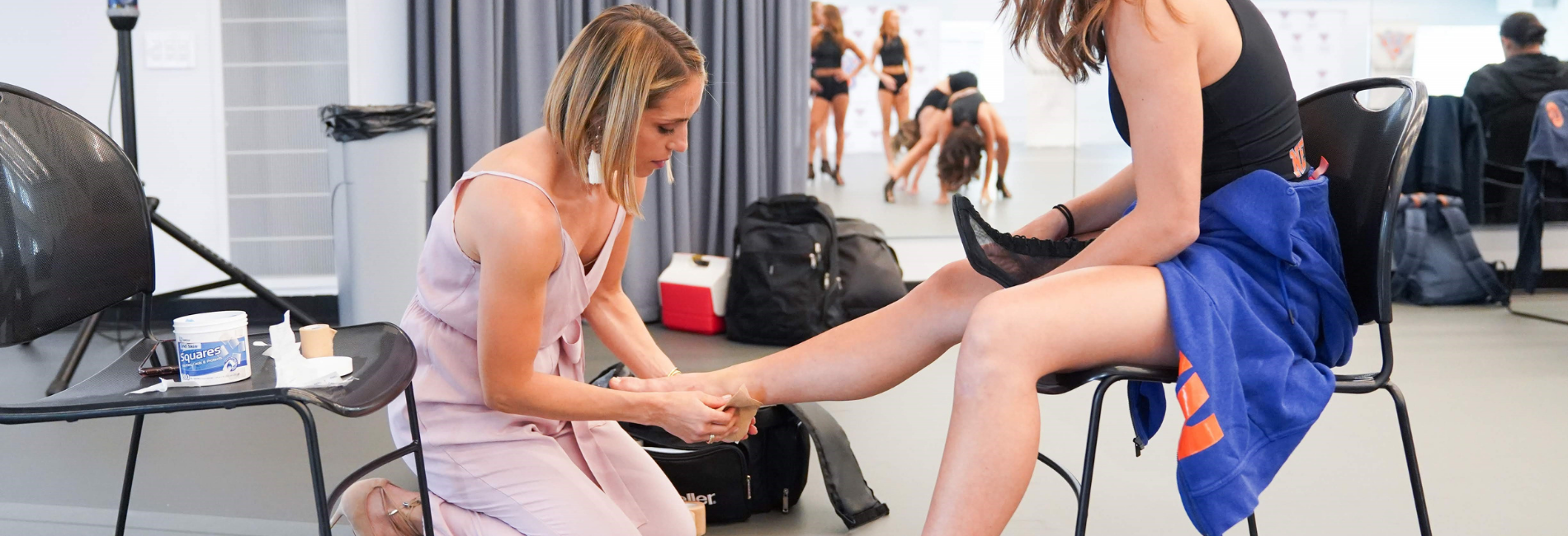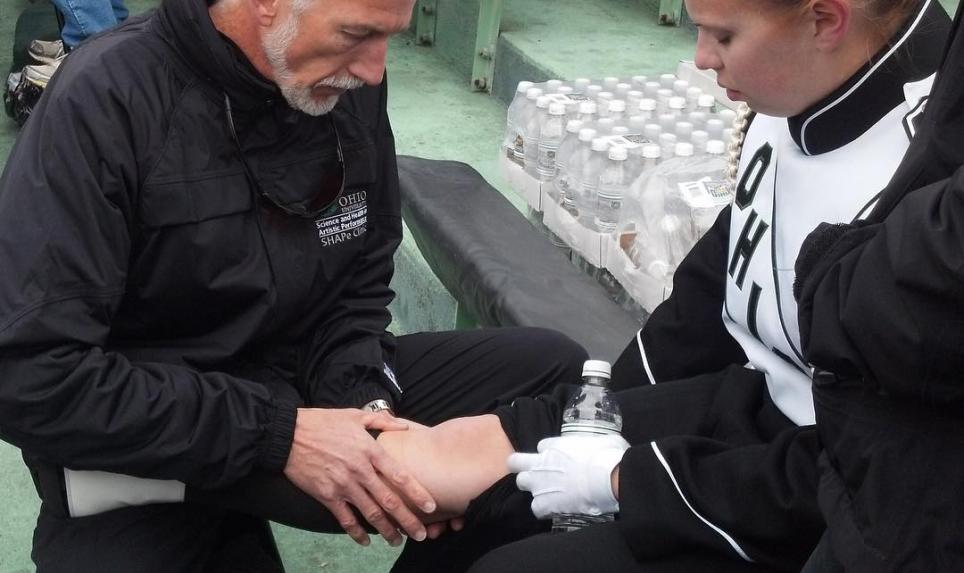Athletic Trainers in Performing Arts
Performing arts athletic trainers provide specialized injury prevention and rehabilitative care to dancers, musicians and vocalists around the world.

Roles and Responsibilities

ATs work with a variety of professional performing art entities including sports entertainment teams, theatre productions and tours, music tours, dance companies and wrestling. They also work with performing artists and affiliated staff at theme parks, rodeos, drum corps and circus arts and provide health care services to collegiate performing arts departments including dance, theatre, marching band, instrumental music, vocal music and film.
Studies show that the on-site medical care ATs provide to performers reduces both the frequency and severity of injuries as well as reducing operating and production costs.
Performers should have direct access to athletic trainers for functional movement evaluations, injury prevention interventions and return to performance treatment and therapies. ATs working in performing arts continue to show cost savings and reduction in injuries.
- Amanda Donahue MS, ATC, Palladino School of Dance & School of the Arts
State Practice Act Considerations
As health care professionals, athletic trainers must abide by the regulations outlined in the statute of the state in which they are practicing. In conjunction with the state practice act, the athletic trainer’s individual education, training and skillset determines their unique scope of practice.
Value of an AT in Performing Arts
ATs integrate traditional athletic training services with performing arts-specific concepts to reduce the risk of injury and enhance performance in dancers, singers and other artists.